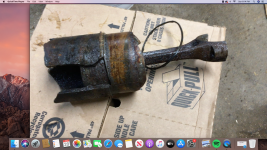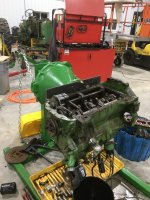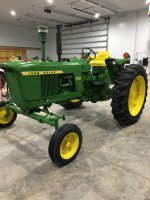I'm getting water in the oil pan. After a few hours running and letting it sit for a couple days I'll get about a pint of water out the oil drain plug before oil shows up. I replaced the head gasket but did not resurface or inspect the head for cracks. Also didn't see any obvious leak path across the gasket. On reassembly, the leak is still there. If the block needs to be removed I'm not going to attempt this repair but anything in frame I'm set up to do. Is there a way to diagnose where the leak is? I read the H has dry sleeves but the Super H has wet sleeves (o-ring). Is that right? I'm thinking I will:
1). pull the pan, pressurize the radiator, look for leaks around the sleeves. If not,
2). pull the head and have it resurfaced and inspected for cracks.
Make sense? Are there other things to look for? Where is the most likely leak point?
1). pull the pan, pressurize the radiator, look for leaks around the sleeves. If not,
2). pull the head and have it resurfaced and inspected for cracks.
Make sense? Are there other things to look for? Where is the most likely leak point?




